---------------------------
Reading Water Tutorial:
There are 3 things you must ask yourself before you decide if the section of river you are fishing is "Steelhead water" and will you have a chance of catching these magnificent fish.
1.) Adequate depth to protect the fish from predators, boaters, and anglers. Rarely will you find a fish in water less than 2 1/2 feet, try focusing on water that is in the 3-15 foot range.
2.) Current Velocity, the best current speed is anywhere from a slow walking pace, to a slow jogging speed. Remember Steelhead want to get from point A to point B using the least amount of energy required. They don't want to be battling rapids, but they like a little water disturbance.
3.) River bottom structure, Steelhead DO NOT like sand.Sand irritates a Steelhead's gills. They will rarely hold in sandy bottoms. Instead look for structure that consists of small to medium sized boulders. These could be the size of a baseball, basketball, or bigger. Also Cutbanks, Ledges, Depressions, Channels and Logs are also great assets.
Reading water is certainly a necessity to successful Steelheading, but a huge factor and one that allot of new anglers have trouble with comprehending is you have to COVER WATER. Unlike salmon: Steelhead don't come to you, you go to them. Salmon come by in the thousands, they travel in large schools and when you find a good spot where a fish is, most likely you will stay there and fish it until you limit out or the bite slows. With steelheading it is the total opposite approach, they don't travel in large schools and they don't come by in the thousands.
Fish a spot as long as is takes to cover the entire run thoroughly but don't spend all day at the same spot. Instead cast your offering with a approach and move down in a grid like fashion. First cast short, then a longer one and then finally another longer cast: Step down a few feet and repeat. Once your done with the drift if you haven't had a strike, you can either change your offering or move on. I typically will fish anywhere from 7-10 spots a day spending anywhere from 20 minutes to a hour at each spot. Covering water is critical, remember that!
Current seams: The boundary between fast water and slower water is a current seam. The swift currents on one side of the seam are too fast for a fish to comfortably hold. The slower-moving, or slack water on the other side of the seam is too quiet to be attractive or secure for the Steelhead, so it travels and holds on the seam.
During Winter/Early Spring fish the slower moving section.
During Summer/Early Fall fish the faster moving section of the drift.
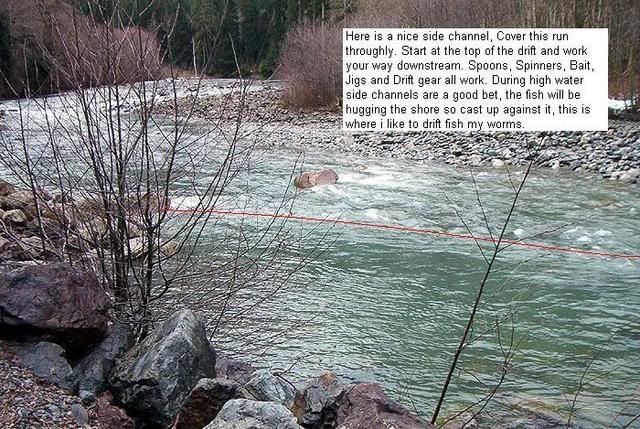

Side Channel: A well defined narrow band of deep water that is surrounded/bounded by shallower water. These are often by the rivers edge and are darker than the rest of the water surrounding it. Think of these as a fish highway, migrating fish will move up this stretch of water when they can find depth/structure to make them feel secure.
Pocket water: Pocket water is associated with swift water and structure. In a boulder-strewn rapid, there are areas of slower/slack water that may be found in front of, behind, or beside large rocks. Float fishing is a very effective technique for fishing boulder strewn water, and pocket water. Spoon fishing is also a very effective technique, especially during the winter months when Steelhead are lethargic.
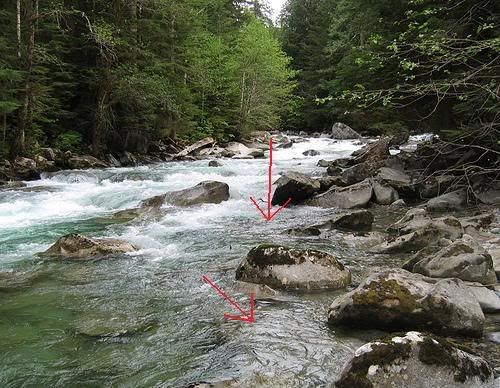
Tailouts: The smooth/slower water upstream from a rapid/faster flowing section of water is a tailout. Tailouts are usually anywhere from 2-10 feet deep, and 20 to 100+ feet long. Tailouts have flat unriffled surfaces, and is the shallowest holding water. Fish are more exposed in a tailout and are on the alert more than a fish in a pool or back eddy.

Pools: These are anywhere from 5-20 feet deep, and at times are a good bet to find Steelhead. I start at the top section of the pool, and work my way downstream covering this water thoroughly. Work through the water column covering all aspects of it. However: Just like in Bill Herzogs book he stated that fish in deep pools are suspended, so your offering doesn't necessarily have to be near the bottom.

Some In-Between water that can produce fish when other sections don't. This is not prime holding water, but they will and do hold fish.
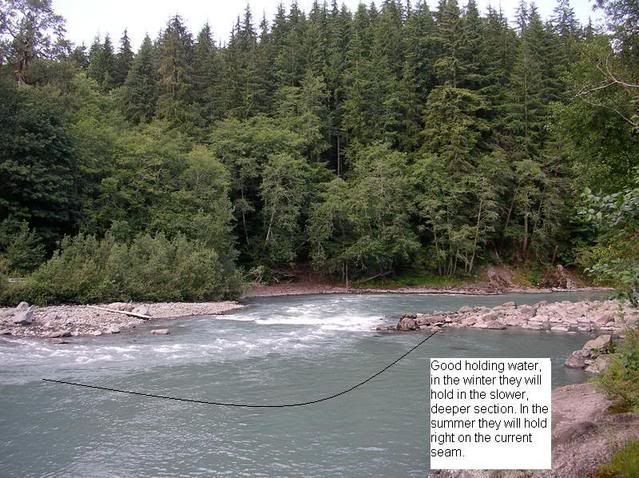
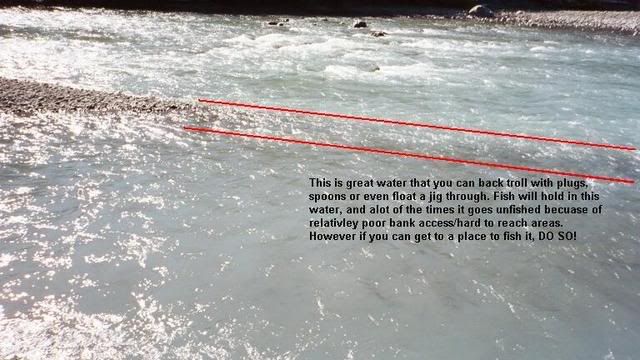

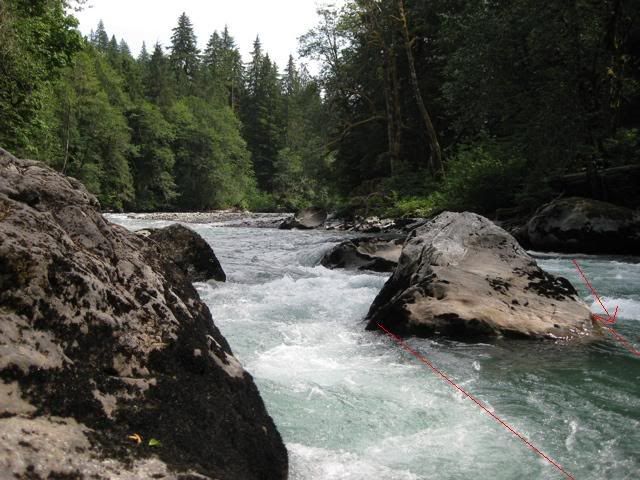
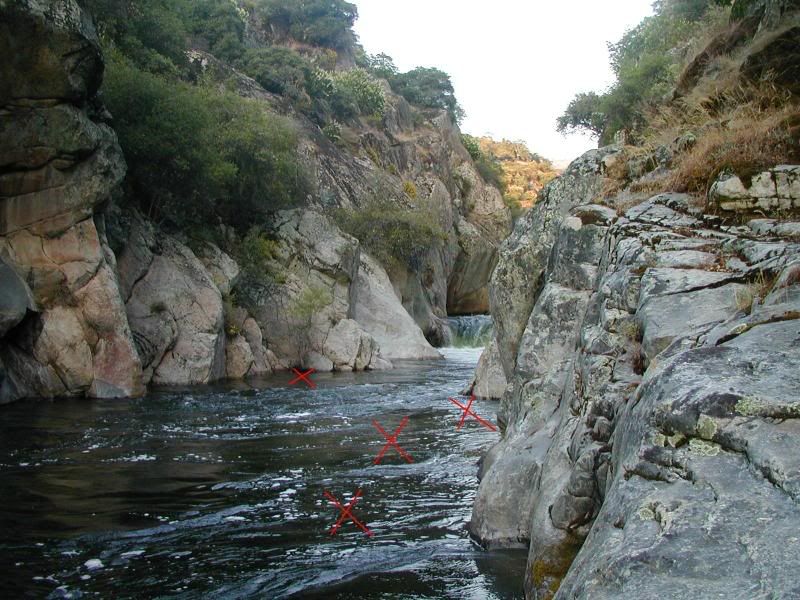
Fish have to move through stretches like this one. It's not prime holding water, but it will hold fish. Obviously this is deep water, so you are going to need to either use a plunking setup or use allot of weight to fish this effectively. This canyon pool has big broad boulders underneath that hold fish very well. I rarely fish water like this but when i do i use a elongated spoon in the 1/2 to 1 oz size. Spoons have the necessary flash to wake up lethargic Steelhead and are effective in all sorts of water, including this canyon pool.
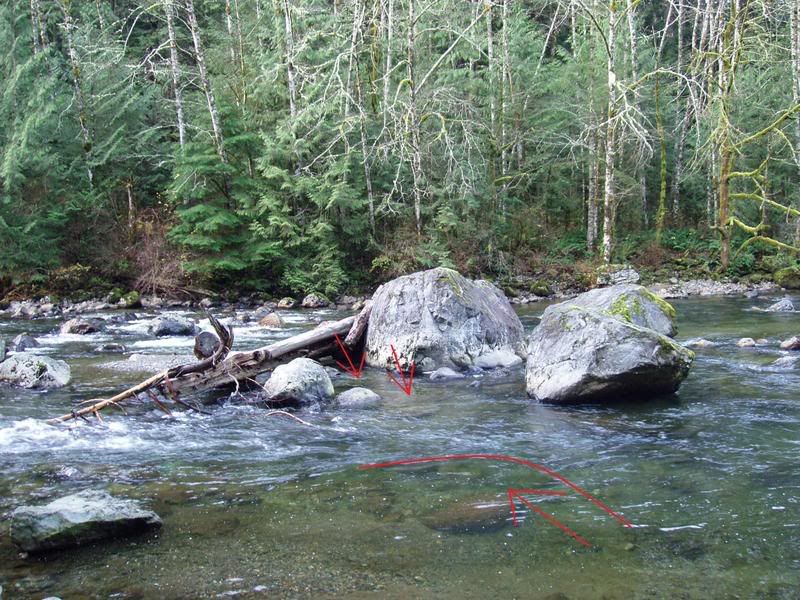
This water can only be fished in Winter, it does not have the required depth for fish to lounge in the summer. There are lots of rivers with water like this, that can only be fished one season a year. This is good water at times, especially after a high water period when the river starts to gradually drop back into shape. Fresh fish will come down and take refugee in the first good spot they see, after battling miles of raging river. In this particular river the water before this is raging, and bank access is limited/boat access is impossible.
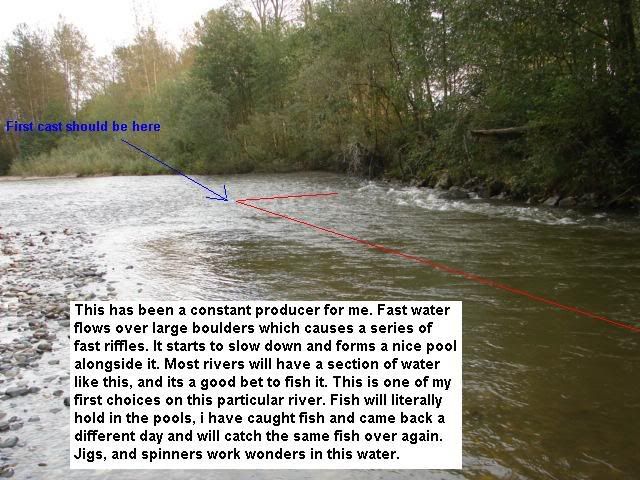
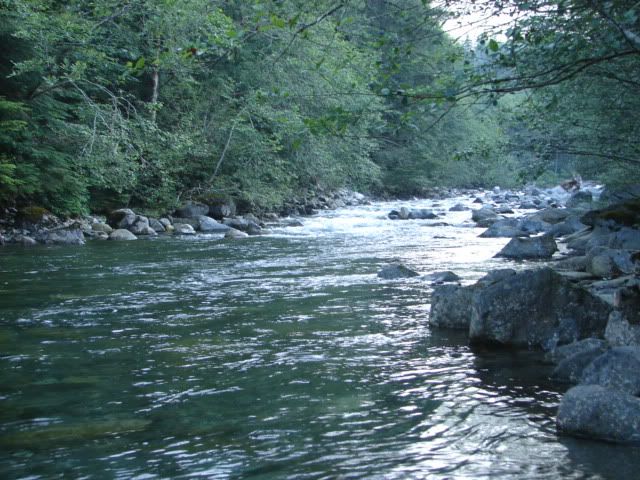

This is a boulder in a rapid, this is the only place a fish could rest in this section of the water. There is enough depth and the current velocity is being obstructed by the boulder which is providing oxygen as well for the Steelhead. As you can see this section also has a gravel bottom which is critical for finding Steelhead. I use a 1/8 oz jig in purple/cerise during the winter when the water is a dark green. And a 1/16 oz Black and pink jig in the summer, when the water is crystal clear. Try to position yourself above the holding water and let your lure/jig drift on the outside edges of the box i drew. Then move across to a different angle and gradually place your jig closer and closer. I have found this approach to spook the fish less, and it allows me to work the water effectively. In the winter you could position yourself downstream and cast towards the rock, but if the fish doesn't want your offering it is going to most likely move. With the other approach he gets a different approach each cast.



i love it .....thank you so much......i have been hooking into some nice fish after reading this article
ReplyDelete